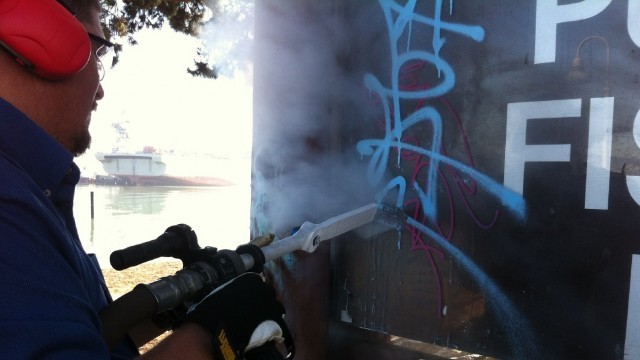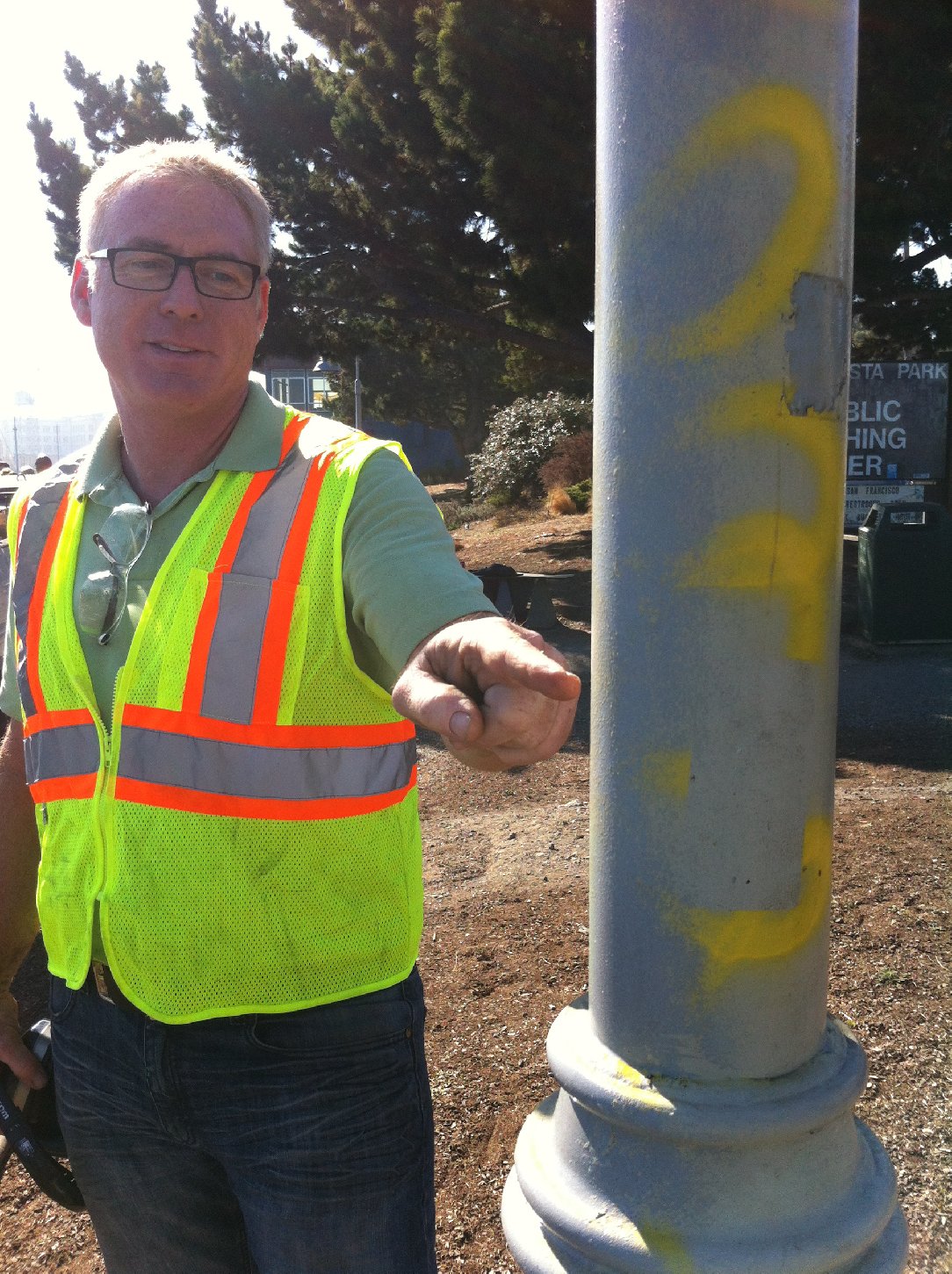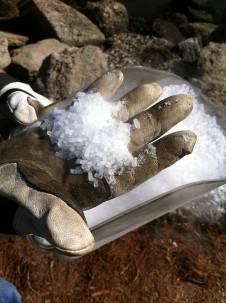
Rummage through the pantry or freezer and you’re likely to find some of the ingredients the Environmental Protection Agency is now deploying to clean up graffiti.
Glass, dry ice and a form of soy oil are among the items the EPA has paid the Institute for Research and Technical Assistance to test as non-toxic solvents that are safe for humans and the environment. The Institute, based in Los Angeles, is a non-profit that researches alternatives for hazardous chemicals, in particular solvents.
“Graffiti is everywhere and in order to clean it up, we traditionally use incredibly toxic chemicals and those chemicals go into the environment,” said Jared Blumenfeld, EPA’s regional administrator for the Pacific Southwest. “They also harm workers so the exciting thing about this is the country is spending billions on cleaning up graffiti now we have a green solution.”
Each year the San Francisco Department of Public Works receives some 30,000 phone calls about graffiti vandalism, according to director Mohammed Nuru. The city spends $20 million annually on graffiti removal, much of it done by volunteers who must be protected from the toxic fumes in traditional solvents.

“In some cases you have to wear a mask and suit up,” Nuru said. “We’re looking for solvents that have fewer chemicals.”

